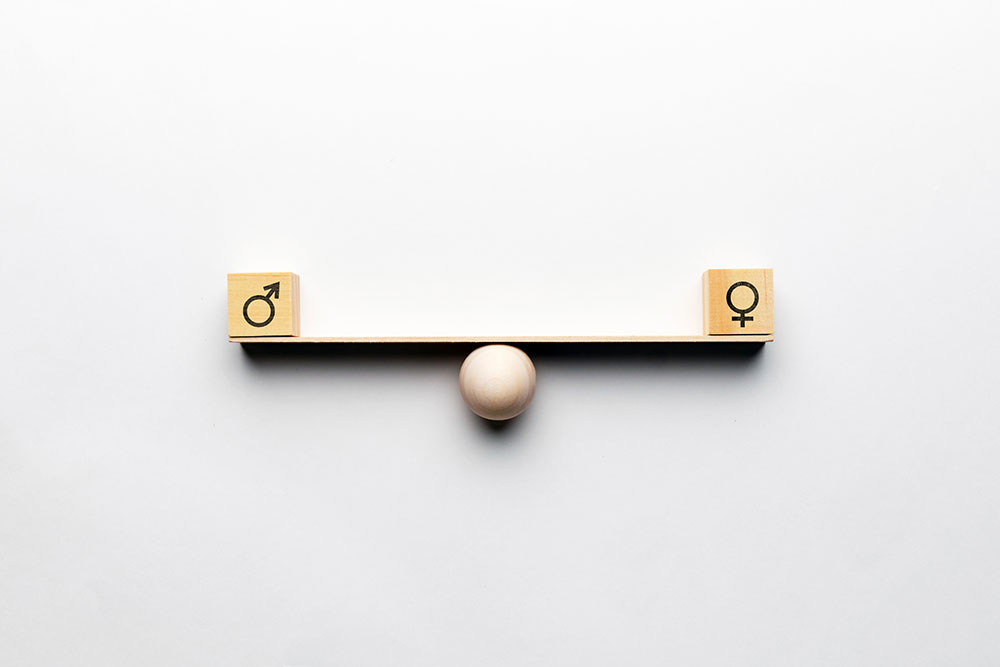The Pink Tax

The cost of being a woman in America.
There’s no reason for men and women to pay different prices for the same types of products and services—but they do. Find out how the Pink Tax affects everyday spending and what’s being done to squash it.
What Is the Pink Tax?
The “Pink Tax” is a term for the additional dollars and cents tacked onto personal care products and everyday services women buy and use. Something as mundane as a disposable razor is often more expensive when colored pink versus blue or when marketed toward women instead of men simply because it’s expected that women will pay more than men for a comparable product. While the razors are similar, if not identical, they come with an unnecessary markup, forcing women to pay more for buying a gender-specific product.
The Pink Tax is not an actual tax, but gender-based price discrimination that’s believed to place an economic burden on women for, well, being women, extending for the entire duration of their lifetime. From baby girls’ toys to walking canes, there’s controversy around the price discrepancies between gendered products.
The discriminatory pricing practice has a longstanding history. Before the Affordable Care Act was declared law in 2010 and took a stance against it, health insurers regularly charged women higher monthly premiums than their male counterparts. The collective reasoning for this was that women’s health costs are routinely more expensive due to reproductive care and procedures—as if a woman can change the fact that she was born with a uterus.
The Pink Tax originally dates back to the 1990s when the California Assembly Office of Research gained national attention for a report that discovered 64% of dry cleaning and laundry establishments charged women, on average, $1.71 more to launder a simple cotton blouse as opposed to a man’s dress shirt. It also found that 40% of hair salons charged women more for a basic haircut compared to a basic men’s cut.
That was the ’90s, but it’s almost 2023! How is this still happening, and what can we do about it?
It’s important to note that this subject is no stranger to debate. One side argues that the Pink Tax is a price discrimination that should be regulated to avoid furthering the economic burden women face. The other side believes that the increase in price for certain female-branded products is based on the cost to make such items as well as supply and demand. The more women want certain products—and the higher the price they are willing to pay to own them—the higher and more consistent the markup.
And it’s not only supply and demand at work here. Marketing to women is a big business that has come with some questionable tactics to increase spending. With women making up 85% of overall purchases, their buying power is a top priority for companies. A well-known, old-school marketing adage is “shrink it and pink it,” meaning to get a woman interested in buying any given product, all a seller has to do is shrink it down to a smaller size and color it pink. While it’s not inherently wrong for marketers to do what they can to reach their audience through tailored messaging, it is wrong to charge more for these products marketed specifically to women.
What Products and Services Are Affected?
If you’re still wondering if this is a thing, know that this concept has garnered a good amount of research studies proving that there is an identifiable difference between what genders pay for the same types of products.
One popular study is the 2015 case from the New York City Department of Consumer Affairs (DCA) titled “From Cradle to Cane: The Cost of Being a Female Consumer.” The study found that, on average, women’s products cost about 7% more than similar products for men. Among groups of products, there were significant differences in pricing for kids’ toys, children’s and adult’s clothing, personal care products, and senior/home health care products.
If you use a personal care product like shampoo, deodorant, or body wash, you’ve come across the Pink Tax at some point in time. And with so many products on the market, it can be overwhelming to compare pricing and be aware of the Pink Tax when making purchases. These are just a few examples of where it often pops up:
Hygiene products
Ever noticed that for every one shampoo or body wash for men there are five or so for women? Or how about different soaps or deodorants being sold only for one sex? Often these products are packaged quite differently (ex: fields of flowers and smiling women for feminine items; basic blue or black packaging for those made for men), which is sometimes blamed for the price-gouging.
Another thing to note is the Tampon Tax and how it differs from the Pink Tax. Though sometimes confused, the Tampon Tax is an actual sales tax that’s applied to menstrual products, including tampons, maxi pads, liners, menstrual cups, and other feminine hygiene products. Not only are these products a necessity (not a luxury), but women shouldn’t pay extra for simply having different biological functions. There are 22 states still applying sales tax to period products; thankfully, calls to cut tax on menstrual products are currently in the works as of recently, as financial burdens have been magnified due to the pandemic and inflation.
Haircuts
At one point in time, it may have seemingly made sense to charge women more for a fresh cut and style because it may have required more time and effort. However, men have long hair, and women enjoy shorter hair, blurring the lines of what’s considered a men’s cut and a woman’s cut on the service menu. Additionally, not everyone conforms to gender-specific hairstyles, begging the question: Should a woman have to pay more for the same short buzz cut a man would get?
The good news is, some stylists are now charging by length to eliminate any discrepancies for clients and ensure it’s cost-effective for all parties involved. Unfortunately, though, it will take a while for the whole industry to catch up.
Car Ownership
Looking to buy a new vehicle? According to a 2022 study, women may pay up to $7,800 more than men during the length of car ownership of eight years. Factors include purchase price, repair services prices, and insurance prices, all of which indicate that women are quoted more (and pay more!) across the board.
The list doesn’t end there, either. Other products include pens, pain medication, ear plugs, calculators, support wraps, bike helmets, and more items that don’t need to be gendered. Usually, the higher price is due to one color option being pink and the other blue or black. Whatever you buy, it’s estimated that the Pink Tax costs women an average of $1,300 annually, which is much more than a few pennies here and there.

A Bigger Picture of the Pink Tax
It’s no secret that women have been fighting to shorten the pay wage gap and be compensated fairly for the same work men do for more money—and this gap is even wider for women of color. According to a report from the American Association of University Women (AAUW), in 2019, men made a median of $57,456, while women made a median of $47,299—a wage gap of 18%. Compared to white, non-Hispanic men, the pay gap for Black women was 38% and 46% for Latinas. Even more shocking, these numbers are a measure of inequality before the pandemic.
Aside from the current wage gap, it’s also unsettling to think how this tax affects younger generations and women at large when it comes to gender norms and conforming to societal expectations.
It could be argued that society currently puts pressure on girls and women to look, act, and be perceived a certain way. Clothes, cosmetics, hygiene products, salon services, etc. all play a part in achieving a social norm that keeps women in a cycle of needing certain items to “look the part,” and thus, buying into the marketing monster that is the Pink Tax. Marketers and retailers know women will pay for these items just to feel accepted by today’s standards, and they profit off that vulnerability.
Even if a woman willingly embraces these societal standards and enjoys purchasing such goods and services, the Pink Tax is still a reflection of what we value as a society when it comes to someone’s worth as well as the differences in how we raise girls and boys.
It’s about more than money—it’s about morals.
What’s Being Done To Help?
In April 2019 The Pink Tax Repeal Act was introduced by Rep. Jackie Speier, and it was introduced again in June 2021. This act would make it illegal for companies to charge higher prices based on gender for consumer goods and services. Though still legal in many states, New York has since placed a ban on the Pink Tax and requires certain service providers to be transparent with pricing for everyday services. Businesses that do not comply are subject to civil penalties.
While the passing of The Pink Tax Repeal Act is still underway, some businesses are stepping up to ease the financial burden their consumers face from either the Pink Tax or Tampon Tax. Last month, CVS announced it would be dropping prices on its store-branded menstrual products by 25% nationwide and paying the sales tax on those products in a dozen states: Arkansas, Georgia, Hawaii, Louisiana, Missouri, South Carolina, Tennessee, Texas, Utah, Virginia, Wisconsin, and West Virginia. The company also stated a commitment to partnering with organizations to eliminate such taxes in the U.S. Similarly, Boxed, Inc., an online wholesale retailer offering bulk-sized packaging, noticed price differences between some of its personal care products for women and men, such as body wash and shaving gel. The company moved to adjust pricing so that all consumers pay the same price when purchasing the same products, and like CVS, Boxed is also paying the difference to fight against the Pink Tax.
While these efforts are noble and much appreciated, there are still ways everyday consumers can do their part to also take a stance against discriminatory taxation:
- Support brands committed to gender-neutral pricing.
- Choose gender-neutral products when shopping for toys and hygiene items. (Let’s nix the notion that there’s such a thing as a gender-specific toy from now on.)
- Avoid the dry cleaners until they get on board with fair pricing for both men and women (or at least pay attention to what you pay for your items and be willing to respectfully ask questions if possible).
- Check up on price differences before you buy comparable products. We know this takes time, but it’s too easy to not notice the difference in price amounts, especially if you usually buy online.
- Talk to your state representatives about getting behind The Pink Tax Repeal Act and make it known you do not stand with gender-based pricing.
Additionally, simply being informed about the Pink Tax and sharing what you’ve learned with others will help spread awareness and resistance against unfair pricing. Learn, get involved, and say no to the Pink Tax.








